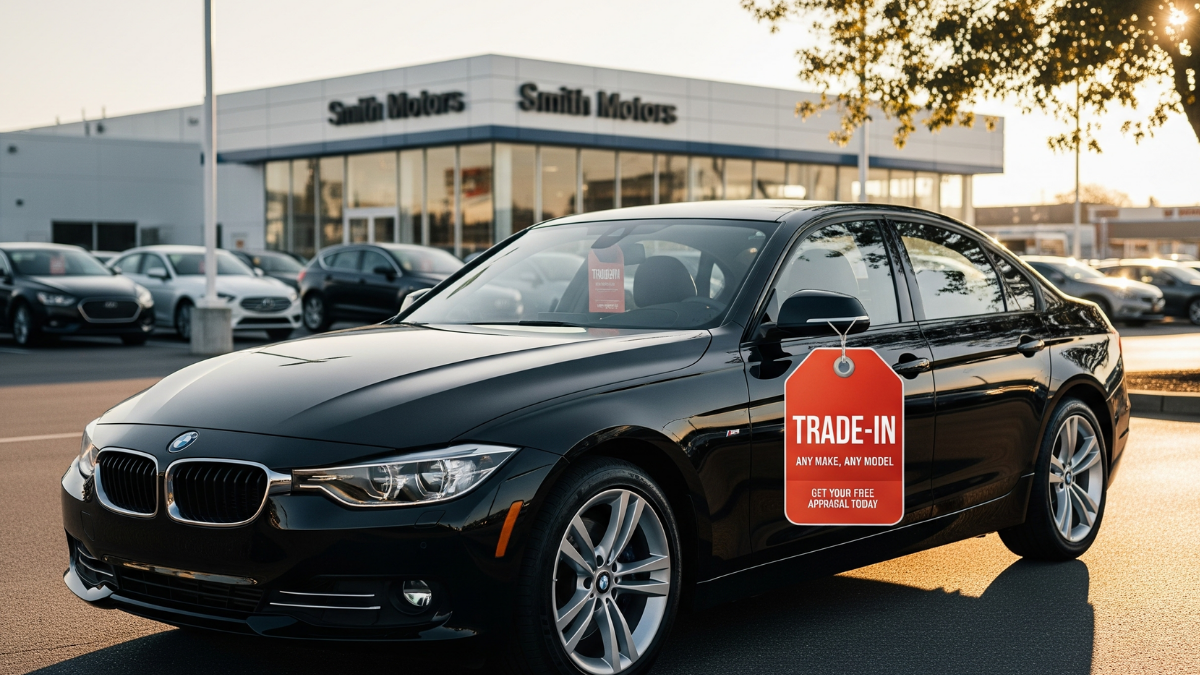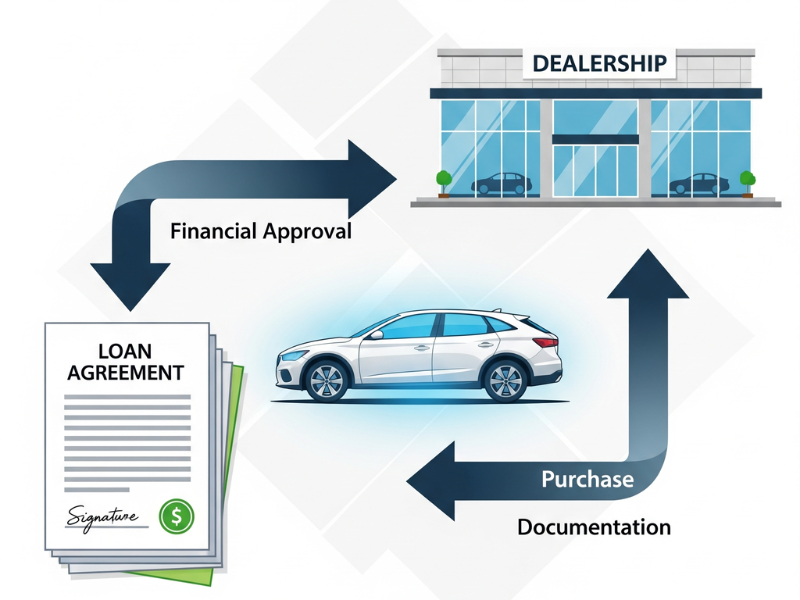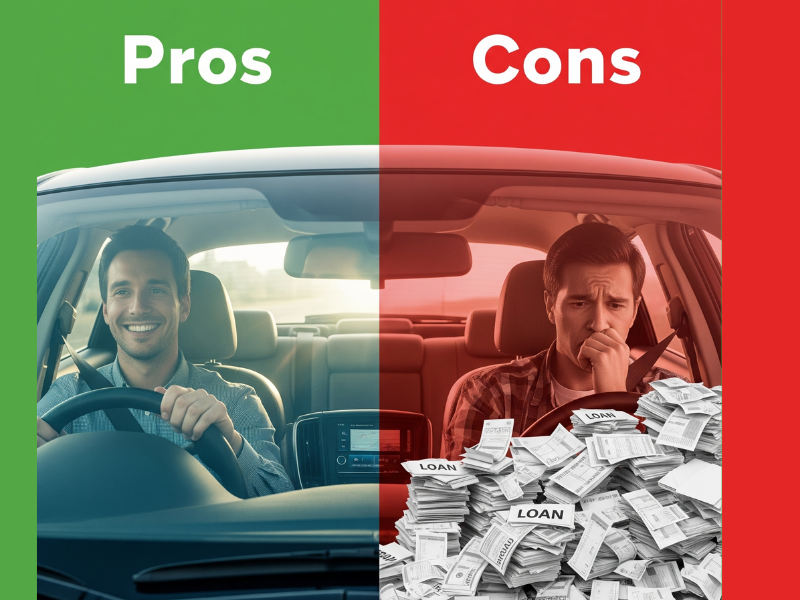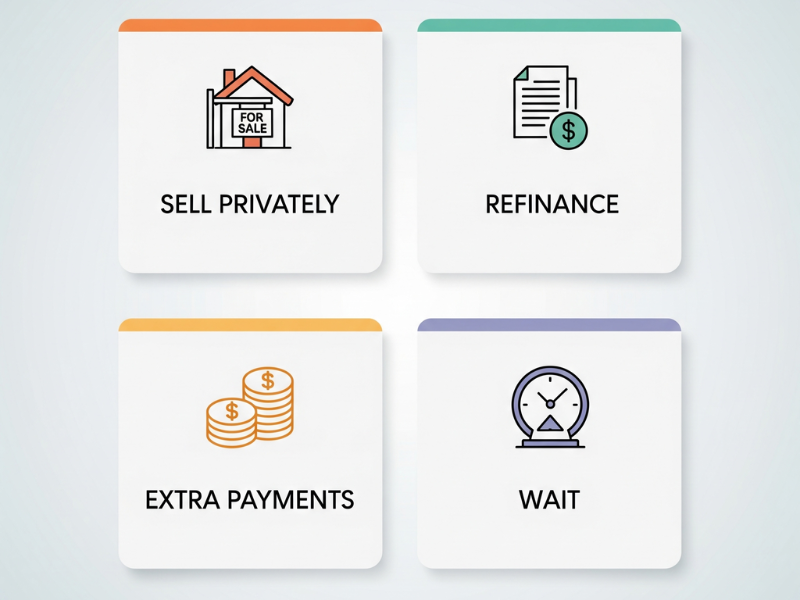Physical Address
304 North Cardinal St.
Dorchester Center, MA 02124
Physical Address
304 North Cardinal St.
Dorchester Center, MA 02124

Ever stared at your monthly car payment and thought, “Is it even possible to trade in a car I haven’t fully paid off yet?” You’re not alone. According to Experian, more than 80% of new cars in the U.S. are financed, which means millions of drivers wonder the same thing. The short answer is yes, you can trade in a financed car, but the details depend on your loan balance, the car’s value, and the dealership’s policies.
In this guide, we’ll break down how trading in a financed car actually works, the benefits and drawbacks, and smart strategies to avoid losing money. Whether you’re upside down on your loan or have built some equity, understanding your options can save you stress, and cash! So, can you trade in a financed car?
When I traded in my first financed car, I’ll be honest, I was nervous. I wasn’t sure if the dealership would even take it since I still owed money. Turns out, trading in a financed car is pretty common. The dealership just needs to handle a few things behind the scenes with your lender. Once I understood the steps, it felt a lot less intimidating.

A financed car simply means you’re driving a vehicle that technically still belongs to the bank or lender until you’ve paid off the loan. You’re making monthly payments, but the lender is listed on the title as a lienholder. When I first heard “lienholder,” I thought it was some complicated legal term, but it just means the lender has a claim on your car until the loan is cleared.
Here’s where the math comes in. Say you owe $15,000 on your car loan, but the dealership only values your car at $13,000. That $2,000 difference? That’s what people mean when they talk about being “upside down” or having negative equity. On the flip side, if your car is worth $18,000 and you only owe $12,000, you’ve got positive equity. That extra $6,000 goes straight toward your next car. I learned the hard way that not knowing these numbers ahead of time can set you up for a nasty surprise at the dealership.
The first time I did a trade-in, I thought I had to pay off the bank myself before walking into the dealership. That’s not true. Most dealers will contact your lender, request a payoff amount, and handle the payment directly. This is why dealerships ask for your loan details upfront. They want to make sure they can clear the title. Once the lender is paid off, any leftover equity (or negative balance) is applied to your new financing agreement.
Now, the paperwork isn’t exactly fun, but it’s straightforward. The dealer will have you sign documents that authorize them to pay off your loan, transfer the title, and handle the DMV stuff. Depending on your state, it may take a couple of weeks for the title to update and for the loan account to show a zero balance. I remember logging into my lender’s app every day, waiting for that magical “Paid in Full” status, it finally came through about 10 days later.
At the end of the day, trading in a financed car is basically a three-step process: check what you owe, compare it to what your car is worth, and let the dealership handle the payoff and paperwork. Simple in theory, but knowing these details can save you from a lot of financial headaches.
I’ll never forget the first time I realized I had negative equity on my car. I walked into the dealership all excited about trading in my SUV, and then bam, the sales guy told me I owed more than the car was worth. It felt like a punch in the gut. But once I understood how equity worked, the whole situation made a lot more sense, and I knew what to do next.
Positive equity is the sweet spot. It means your car’s trade-in value is higher than the amount you still owe on your loan. For example, if you owe $10,000 and your car is worth $14,000, you’ve got $4,000 in equity. That extra money goes straight toward your next car purchase. I had this happen once when I traded in my old Honda, felt like a mini bonus because it knocked down the price of my new ride without me having to pull extra cash from my pocket.
Dealers love when you bring positive equity because it makes the deal smoother. They’ll apply that equity directly to your next down payment, which can lower your monthly payments or help you qualify for better loan terms. In my case, it brought my payment down by about $60 a month. Doesn’t sound like much at first, but over the life of the loan, that was thousands of dollars saved.
Now, negative equity is the tricky part. It’s when you owe more than your car’s worth, also known as being “upside down” on your loan. Imagine your car is valued at $12,000, but you still owe $16,000. That $4,000 difference doesn’t just vanish, you’re responsible for it. The dealer will pay off your loan, but they’ll roll that $4,000 into your new loan unless you pay it out of pocket. I made that mistake once, and let me tell you, my next loan ballooned into something ugly real fast.
So, what do you do if you’re stuck with negative equity? You’ve got options, but none are perfect. You can:
When I was upside down, I ended up waiting another year before trading in. It wasn’t fun driving a car I’d fallen out of love with, but avoiding another $3,000 rolling into my loan was worth the patience.
Understanding equity, positive or negative, is honestly the first step to making a smart trade-in decision. Once you know where you stand, you can plan your next move without getting blindsided.

The first time I traded in a financed car, I thought I was being clever, get rid of the old loan, slide into a shiny new ride, and keep moving. But after a few rounds of doing this, I learned it’s not all sunshine and rainbows. Trading in a car with a loan can save you headaches, but it can also pile on new ones if you’re not careful.
The biggest perk is convenience. You walk into a dealership with a car that’s still under finance, and they handle the payoff with your lender. No extra trips to the bank, no messy paperwork. I remember one time I traded in on a Saturday morning and was driving my new car that same afternoon, it felt ridiculously easy.
Upgrading is another benefit. If you’re tired of your current ride, or maybe your family just outgrew it, trading in lets you move up without waiting until the loan is fully paid. And let’s be honest, selling a car privately is a headache. You’ve got to clean it, list it online, deal with lowball offers, and strangers showing up to test drive it. Trading in cuts out all that hassle.
Now for the not-so-fun part. If you’ve got negative equity, that leftover loan balance gets rolled into your new financing. It doesn’t disappear. I learned that lesson the hard way when I traded in a sedan I owed $5,000 more on than it was worth. My new car loan ended up being thousands higher than it should’ve been, and my monthly payments were brutal.
Even if you have positive equity, you might still end up with a higher monthly payment if you upgrade to a more expensive car. Dealers are pros at making numbers look smaller by stretching out the loan term, but in the end, you’re paying way more in interest.
Being upside down is where trading in can really sting. Imagine owing $20,000 on a car worth $15,000. That $5,000 doesn’t just vanish, it follows you. And if you roll it into your next loan, you’re starting that loan already underwater. I’ve been there, and it feels like quicksand, you just keep sinking deeper unless you make extra payments or find a way out.
Trading in makes sense when you’ve got positive equity, or if your current car no longer fits your life, like needing a bigger vehicle for kids or a safer ride for long commutes. It doesn’t make sense if you’re drowning in negative equity and don’t have a solid plan to deal with it.
I’ve learned to treat trade-ins like a tool, not a quick escape hatch. If the math checks out and it benefits you, go for it. If not, sometimes the smartest move is to hold onto your car a little longer, even if you’re itching for an upgrade.
The first time I tried to trade in a car without doing my homework, I walked out of the dealership completely confused and with a deal I wasn’t proud of. I learned the hard way that there are a few steps you should always take before even setting foot in a showroom. Doing these ahead of time gives you the upper hand and keeps you from getting trapped in a deal that favors the dealer more than you.
This is step one, no exceptions. Call your lender or check your online loan account to get your exact payoff balance. I once relied on the “estimated payoff” on my app and ended up a few hundred dollars short when the dealer contacted the bank. Not fun. Always get an official payoff quote, and remember they’re usually only valid for a set number of days, like 10.
Dealers will toss you a number, but you need to know your own numbers first. Sites like Kelley Blue Book, Edmunds, and NADA Guides give you an estimate of what your car is worth. I like to check all three because they often vary. When I traded in my last car, one site said $12,500, another said $13,200. Walking into the dealership with that range gave me confidence to push back when their first offer was low.
This is just simple math: take your car’s estimated value and subtract what you owe. Positive number? Congrats, you’ve got equity. Negative number? That’s negative equity. When I saw I was $2,000 upside down once, it helped me decide not to trade in right away. Instead, I made extra payments for six months and ended up breaking even. It was boring, but it saved me money.
This one is huge. Don’t settle for the first offer. I once got a $9,500 trade-in quote at one dealer, then drove 20 minutes down the road and got $11,000 at another. Same car, same day. That $1,500 difference went straight into my next down payment. Shopping around takes a little more time, but it can seriously pay off.
Trading in a financed car doesn’t have to be stressful if you prepare. Think of it like studying for a test, you walk in with the answers already in your pocket. Knowing your payoff, your car’s value, your equity, and your options puts you in control of the deal, not the other way around.
There was a time I really wanted out of my car loan but the numbers just didn’t make sense to trade in. That’s when I started looking at alternatives, and honestly, it opened my eyes. Trading in isn’t always the smartest move, especially if you’re upside down. Sometimes a different path saves you way more money in the long run.

I’ll be straight with you, selling privately takes more effort, but you can usually get thousands more than a trade-in offer. I once listed my old SUV online and got $2,800 more than the dealer offered me. That extra cash covered most of the negative equity I had, which meant I wasn’t rolling debt into my next loan. The hassle of showing the car and dealing with buyers was worth it.
If your main issue is the monthly payment, refinancing might be a better option than trading in. I refinanced my car a few years back when interest rates dropped, and my payment went down by $70 a month. Same car, same loan length, just better terms. It bought me breathing room until I was in a better position to upgrade.
This one isn’t glamorous, but it works. Throwing even an extra $100 or $200 at your loan each month can chip away at the balance faster than you think. I once paid an extra $150 a month for half a year, and it was enough to close the gap between what I owed and the car’s value. By the time I traded in, I was even, instead of upside down.
Sometimes the smartest move is the least exciting: wait. Cars depreciate fast in the first couple of years, so trading in too soon almost guarantees negative equity. I hated the idea of keeping a car I’d fallen out of love with, but waiting another 12 months gave me positive equity instead of a debt hole. And when I finally did trade in, it felt good walking into the dealership with the upper hand.
The bottom line is trading in isn’t the only exit strategy. You’ve got options, and sometimes the boring ones, like waiting or refinancing, end up saving you the most money.
Research your car’s market value using tools like Kelley Blue Book, Edmunds, or local listings. Having an accurate estimate gives you a baseline and prevents dealerships from undervaluing your trade-in.
Simple improvements, like washing, vacuuming, and fixing minor issues, can increase your trade-in offer. A clean, well-maintained car signals to dealers that it has been cared for, making them more willing to offer a better price.
Don’t settle for the first offer you receive. Visit different dealerships or request online trade-in quotes. Comparing offers gives you negotiating power and ensures you’re getting the best deal possible.
Dealerships may offer higher trade-in values during promotional events or when they need to hit monthly sales targets. Trading in at the right time can add a few hundred dollars to your offer.
Some dealerships may try to blur the lines between your trade-in value and the price of the new car. Negotiate each transaction independently so you can clearly see how much you’re getting for your trade and how much you’re paying for the new vehicle.
Trading in a financed car isn’t as intimidating as it might sound once you understand the steps. The most important things to know are how much you still owe, what your car is worth, and whether you’re working with positive or negative equity. With that information, you can decide if it makes sense to trade in directly, pay down your loan first, or consider selling privately.
Taking the time to prepare and compare your options ensures you won’t be caught off guard. When you go into the process informed, you’re more likely to walk away with a deal that works for both your finances and your driving needs.
Want to dive deeper into financial topics? Check out our other guides: